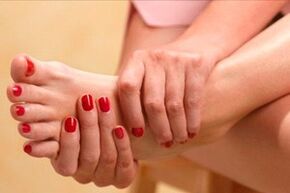
One of the most unpleasant skin diseases is mycosis. Depending on the degree of damage, two categories of diseases are distinguished: dermatomycosis and onychomycosis. In the first case, the skin is affected, and in the second - the nails. To successfully get rid of harmful microorganisms, you need to know what foot fungus looks like and how to fight it.
Main types
Specialists in the field of dermatology identify several types of foot fungus, which differ from each other in the nature of the impact and the cause. As for the pathogenic microorganisms that cause the development of fungal diseases, they can be:
- musty;
- yeast;
- dermatophytes.
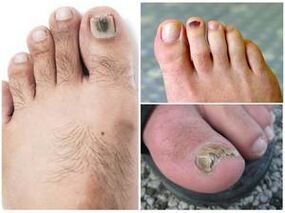
Exposure to these parasites leads to the development of a dangerous condition called rubromycosis, which affects the skin of the feet. In addition, the disease may vary in clinical presentation and may be membrane-like, moccasin-like, or vesicular.
The development of the fungus causes excessive saturation of the blood vessels, dryness and flaking of the skin. In addition, the process itself proceeds slowly and without significant symptoms. The first sensations of itching or burning are felt only after a severe leg injury. Soon the process of nail deformation begins, leading to blisters, scabs, plaques and pustules.
If the necessary measures are not taken, the scale of the damage will be colossal, and the process of walking will be accompanied by pain. Knowing what the foot fungus looks like and how it manifests itself, the patient can seek help from a specialist in time and avoid dangerous consequences.
When it comes to therapeutic treatment, it is important to know the types of diseases. The method of approach to the problem is determined only after a comprehensive examination under a microscope and preparation of a clinical picture. Various exfoliating products are used to clear the skin of rashes. These include ointments and creams containing salicylic acid. Complex treatment also includes antifungal drugs.
If the degree of damage is too severe, highly effective compresses and emollients are used. Success in the fight against the disease depends on the responsibility of the patient and his desire to start treatment in a timely manner.
Methods of infection
There are many causes and factors that determine nail damage from fungal diseases. In most cases, this happens directly - when the nail plates come into contact with soil or vegetation, sick people or animals. As for the indirect paths, they look like this:
- If a person uses objects and personal belongings of a fungus carrier.
- If a person comes into contact with pet care items.
There are also many predisposing factors that increase the risk of developing mycosis. These include age-related characteristics, since young children are much more likely to suffer from the disease due to excessively thin skin and the lack of the necessary protective functions in the body.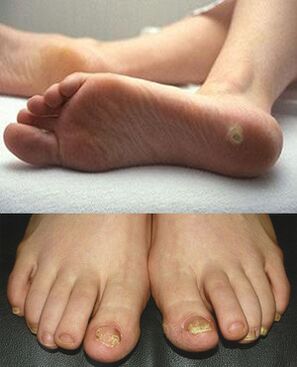
In addition, a fungal infection attacks a patient with a weakened immune status. If the immune system is weakened, it cannot fight such manifestations, which leads to destructive processes.
Other factors include:
- Insufficient functioning of the nervous and endocrine systems. Because of this, defense mechanisms are weakened.
- The development of chronic infectious diseases that negatively affect the immune system, increasing the likelihood of fungal development.
- Excessive sweating of the feet. This discomfort is a congenital pathology or the result of wearing uncomfortable shoes.
- Changes in the composition of sweat. This process creates a favorable environment for fungal microorganisms, which leads to their activation.
Symptoms of rubrophytosis
A parasite called Tr. Mentagrophytesvar is the main cause of the dangerous fungal disease rubrophytosis. Due to its small size, it immediately settles in the stratum corneum or granular layers of the skin, causing the development of allergies and other unpleasant processes. In most cases, the vital activity of the parasite is accompanied by the following reactions:
- Abdominal swelling with thick crust.
- The appearance of pustules and swelling.
- Severe skin corrosion.
- The appearance of scales and crusts on the skin, causing pain.
- Processes of yellowing and deformation of the nail plates.
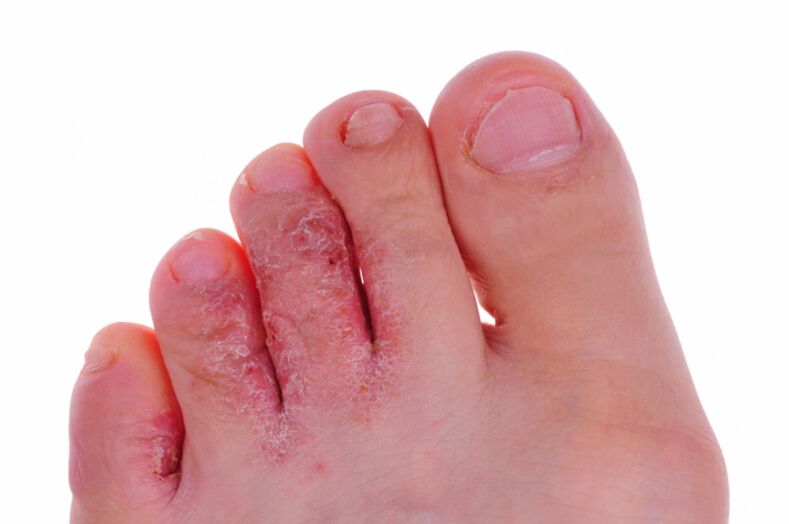
In addition, severe itching and the development of pain when walking cannot be ruled out. During the clinical examination, the specialist makes a comprehensive picture and describes the symptoms while examining the scraping.
If the disease progresses rapidly and worsens, the patient can be prescribed 0. 25% silver nitrate, 1% resorcinol and 10% calcium. Antihistamines are used to combat allergic manifestations. In severe cases, highly effective antifungal drugs fight the symptoms of rubrophytosis.
Candidiasis of the feet
Candidiasis of the feet is rare. The causative agent of the disease is a dangerous fungus of the genus Candida, which peacefully exists in every organism, but is conditionally dangerous and does not pose a great threat. But if the number of microorganisms starts to increase, it leads to discomfort and serious health consequences. Additional factors contribute to this, including the deterioration of the immune system, frequent hypothermia, stressful situations and an unhealthy lifestyle. As for external factors, they include:
- Prolonged exposure to water causes a massive separation of the skin layers from each other.
- Accidents at home or at work.
- Using shoes of the wrong size or material.
Manifestations of onychomycosis
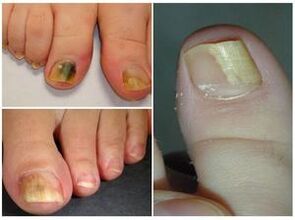
When trying to understand what the toe fungus looks like, you should learn about another dangerous type of pathology - onychomycosis. Its development is accompanied by a fungal nail infection after water procedures in ordinary pools, showers and saunas. In terms of spread, the disease is not inferior to mycosis, because scales with dangerous parasites are quickly separated from the nail plates and then found on fabrics, benches or carpets. If there is high humidity in the environment, the parasite not only finds itself in comfortable conditions, but also begins to work on the reproduction of the colony.
In the early stages, the pathogen affects the skin of the feet, causing an itchy sensation. As a result, the patient wants to scratch his leg, but this only worsens the problem. Soon the skin is covered with small cracks and scratches, and pathogens begin to settle under the nail and actively multiply.
The probability of encountering a pathology increases many times with nail injuries, imbalanced blood circulation and the presence of complex diseases, including diabetes and sexually transmitted diseases.
Depending on the form and degree of damage, nail fungus is divided into three groups:
- Normotrophic. As it develops, the color of the nails becomes yellowish-brown. The thickness and shape of the nail remain the same.
- Hypertrophic. This leads to a permanent change in color, loss of shine and deformation of the shape of the nail. This type of onychomycosis causes pain and prevents the patient from moving freely. The problem can be worsened by wearing uncomfortable shoes.
- Onycholithic. The pathology leads to a change in the shade of the nails, causing them to turn brown. In addition, the plates lose their usual strength and begin to delaminate. In the exposed areas of the nail bed, deformed layers appear.
Effective treatment
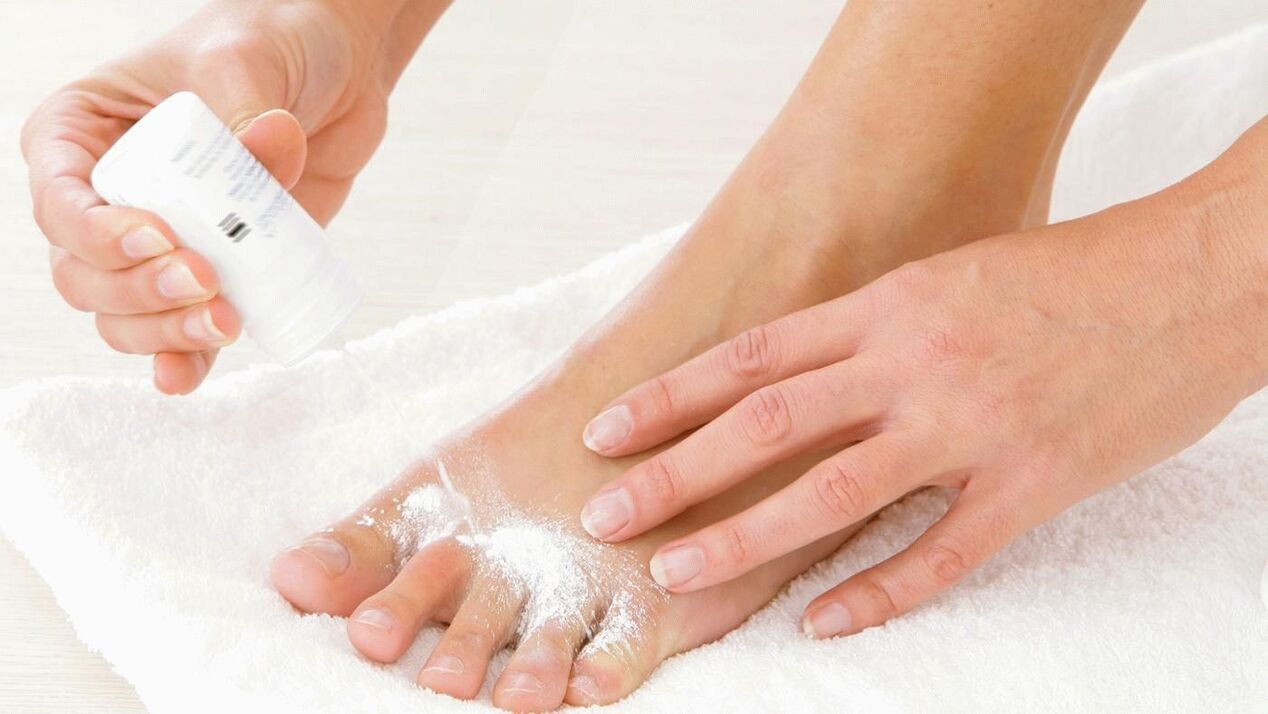
To treat the disease, the use of local antifungal drugs is practically useless, which is explained by the deep penetration of microorganisms under the nails. Before starting to fight the pathology, it is necessary to locate the fungus. To do this, specialists prescribe keratolytic drugs or patches to the patient. Sometimes the problem is solved mechanically, by cutting out deformed and dead sections of the nail plate with a file or special clips. When performing this procedure, you must make sure that the tool is clean.
The most effective way to fight nail fungus is the combined use of patches and mechanical nail cleaning. As a keratolytic agent, you can use a kit consisting of a patch, a nail file and a special ointment. At the end of the nail removal procedure, it is necessary to use systemic antifungal drugs.
People's funds
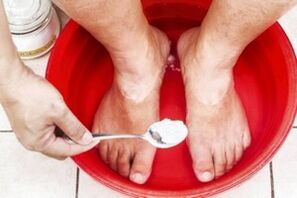
It is quite possible to get rid of fungal infections of the feet without the help of a specialist. However, self-treatment should be treated with special responsibility, understanding that such a process can take a lot of time and effort. It is also necessary to keep in mind that different mushrooms react in their own way to the action of any drugs or folk remedies. Home medicine, if used incorrectly, can only make the problem worse by helping to detect parasites.
In order to avoid such a development of events and to successfully destroy the fungus colony, it is necessary to combine the proper cleansing of the skin with the cleansing of the body from pathogenic microorganisms and the complete restoration of the epidermal layer. For these purposes, it is recommended to use baths and wipe your feet and hands with antiseptics daily. The most effective folk remedies for baths are:
- boric acid;
- Apple vinegar;
- hydrogen peroxide.
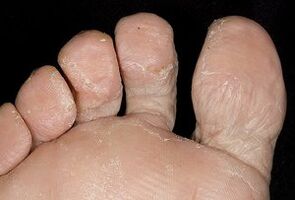
To prepare a bath, you need to take 20 grams of one of the above compounds and dilute it in a liter of boiled water. The feet are then placed in the solution for 20-40 minutes. To notice a significant improvement in the condition of your nails, it is enough to carry out such procedures regularly for several weeks.
To clean the skin from redness, itching and burning, it is recommended to wipe your feet daily with a mixture of soda with added salt. A good antibacterial and anti-inflammatory scrub can be a mixture of equal amounts of minerals and essential oils. The selected components are mixed and the affected areas are covered with the finished mixture.
Tar soap is a serious enemy of fungi. It contains birch tar, which has long been considered one of the most powerful antibacterial substances. It should be applied to the affected areas and washed off after 5 minutes. The course of treatment with this soap is two weeks. At the end of the procedure, the skin is treated with zinc cream or ointment.
Hardware solutions
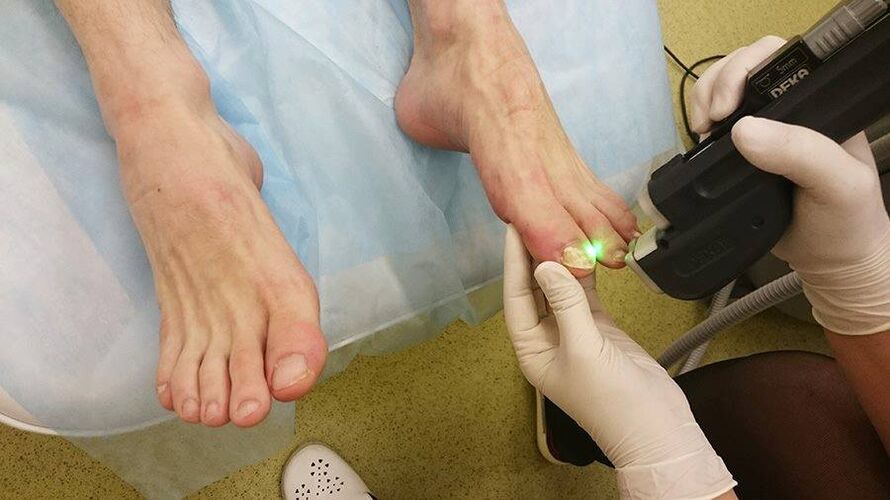
If the nail fungus problem has worsened significantly and any folk or official remedies practically do not give results, you can use an innovative solution - hardware treatment. This method is very effective and can be the only salvation in cases where other drugs are powerless.
Among the available techniques, laser treatment with erbium lasers is the most common. Cauterizes the mycelium and allows you to get rid of the visible symptoms of nail fungus. In addition, the technology allows you to clean the skin around the nails, between the fingers and on the feet, restoring its former elasticity and attractiveness.
If you follow the basic rules of skin care for fungal diseases of the feet, it is quite possible to destroy this dangerous pathology. It is important not to postpone treatment for the future and to immediately take appropriate measures if suspicious symptoms appear.















